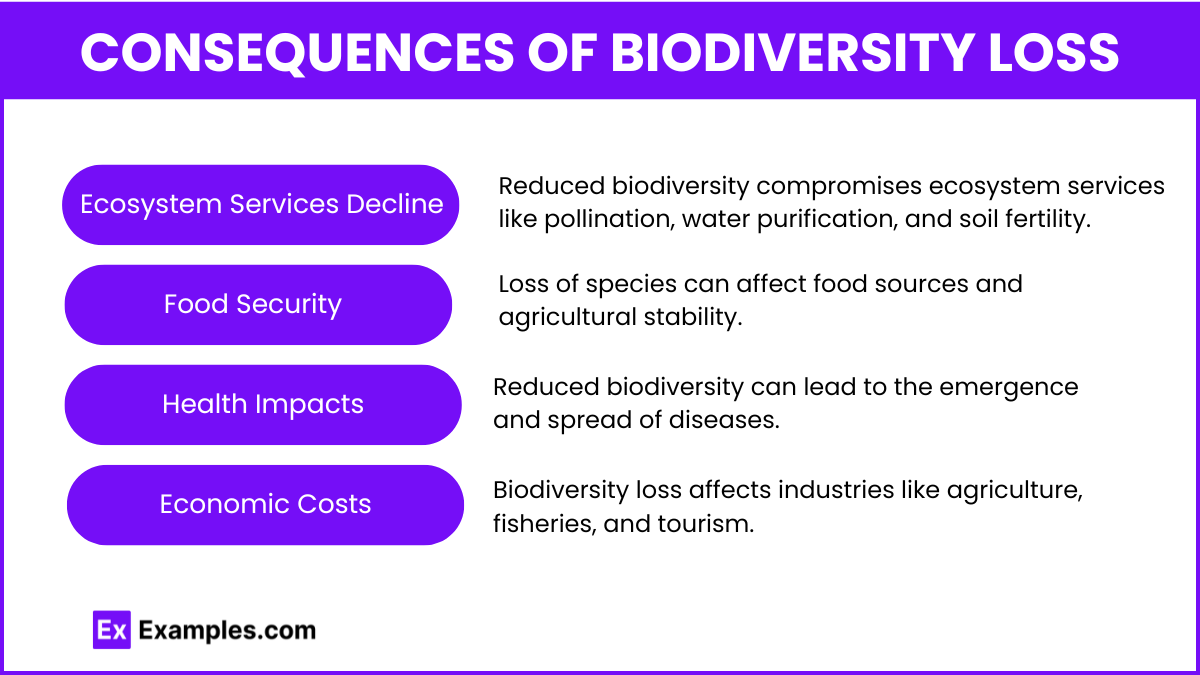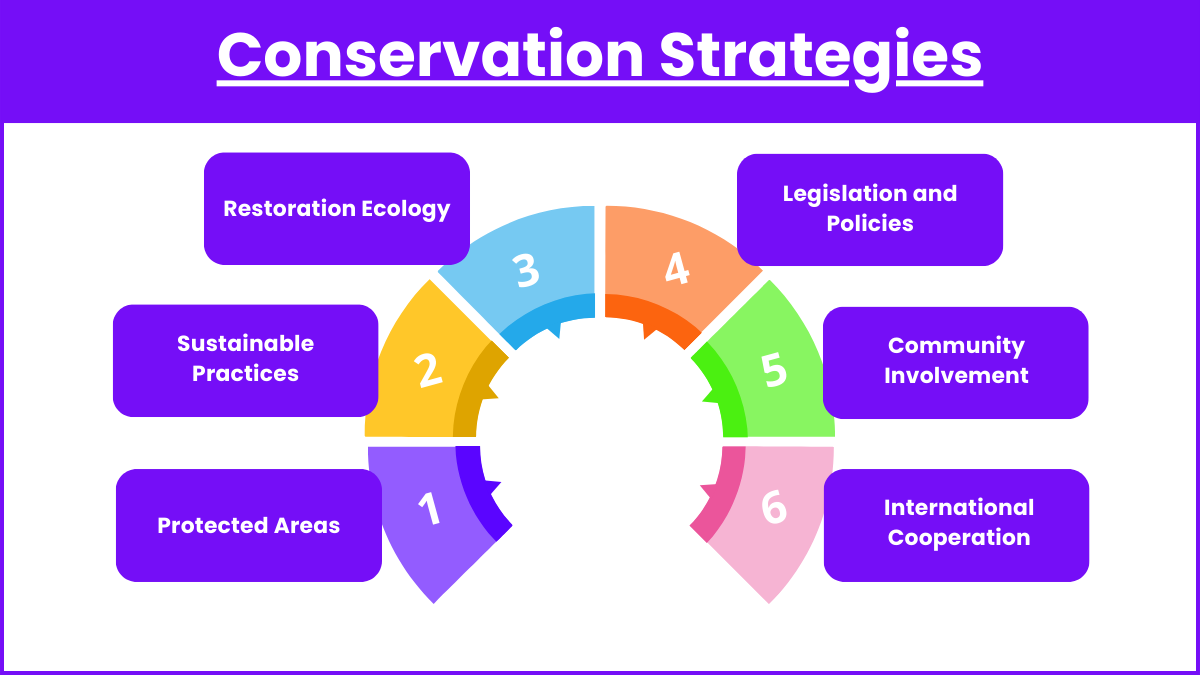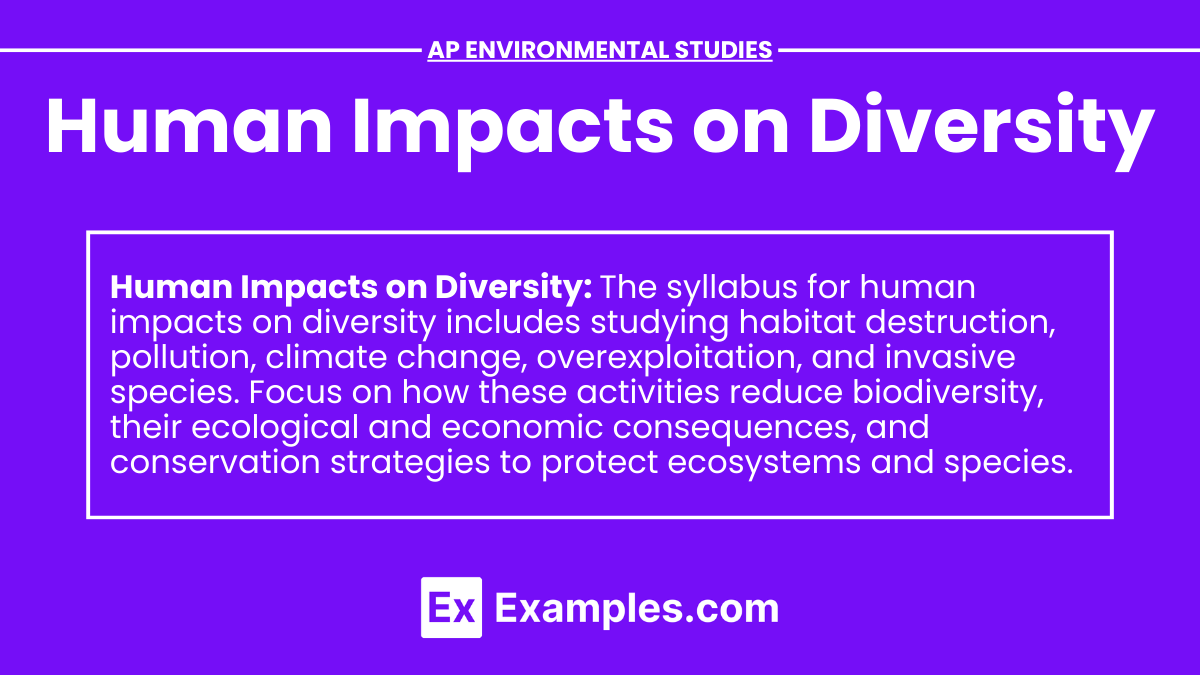Human activities profoundly impact biodiversity, altering ecosystems and disrupting ecology. In AP Environmental Science, understanding these impacts is crucial as they threaten the biosphere’s balance. Habitat destruction, pollution, climate change, overexploitation, and invasive species significantly reduce biodiversity. These actions affect ecosystem services and species survival, highlighting the need for conservation. Addressing human impacts on biodiversity is essential to maintaining a healthy biosphere. and ensuring the sustainability of natural resources.
Learning Objectives
By studying human impacts on biodiversity, students will understand how human activities affect organisms, flora and fauna, and ecosystems. They will explore the consequences of habitat destruction, pollution, overexploitation, invasive species, and climate changes on biodiversity. Students will analyze the interdependence between human actions and ecosystem health, emphasizing the importance of conservation and sustainable practices. This knowledge will prepare them to address and mitigate the adverse effects of human activities on flora and fauna.
Major Human Impacts on Biodiversity

Habitat Destruction
- Deforestation: The clearing of forests for agriculture, urban development, and logging reduces habitat for countless species.
- Urbanization: Expansion of cities fragments habitats, isolating species and reducing genetic diversity.
- Agriculture: Conversion of natural landscapes into agricultural fields diminishes native habitats and alters ecosystems.
Pollution
- Water Pollution: Industrial runoff, agricultural chemicals, and plastic waste contaminate water bodies, harming aquatic life.
- Air Pollution: Emissions from vehicles and industries release harmful substances like sulfur dioxide and nitrogen oxides, leading to acid rain and respiratory problems in wildlife.
- Soil Pollution: Pesticides, heavy metals, and waste accumulation degrade soil quality, affecting plant and microorganism health.
Climate Change
- Temperature Rise: Global warming affects species’ distribution, phenology, and behavior, leading to mismatched ecological interactions.
- Ocean Acidification: Increased CO2 levels lower ocean pH, affecting marine organisms, especially those with calcium carbonate shells.
- Extreme Weather: More frequent and severe weather events disrupt ecosystems and species survival.
Overexploitation
- Overfishing: Excessive fishing depletes fish populations and disrupts aquatic food webs.
- Hunting and Poaching: Illegal hunting for meat, trophies, and traditional medicines threatens species survival.
- Trade in Wildlife: The global trade in exotic pets and animal products reduces wild populations and spreads diseases.
Invasive Species
- Introduction: Non-native species introduced intentionally or accidentally outcompete, prey on, or bring diseases to native species.
- Impact: Invasive species can alter habitats, reduce native biodiversity, and disrupt ecosystem functions.
Land Use Change
- Agricultural Expansion: Conversion of natural habitats into monocultures reduces biodiversity.
- Infrastructure Development: Roads, dams, and other structures fragment habitats and create barriers for species movement.
- Mining and Resource Extraction: Destruction of habitats and pollution from mining activities impact local biodiversity.
Consequences of Biodiversity Loss

- Ecosystem Services Decline: Reduced biodiversity compromises ecosystem services like pollination, water purification, and soil fertility.
- Food Security: Loss of species can affect food sources and agricultural stability.
- Health Impacts: Reduced biodiversity can lead to the emergence and spread of diseases.
- Economic Costs: Biodiversity loss affects industries like agriculture, fisheries, and tourism.
Conservation Strategies

- Protected Areas: Establishing and managing protected areas to conserve habitats and species.
- Sustainable Practices: Promoting sustainable agriculture, forestry, and fishing to reduce environmental impact.
- Restoration Ecology: Restoring degraded ecosystems to their natural state.
- Legislation and Policies: Implementing laws and regulations to protect endangered species and habitats.
- Community Involvement: Engaging local communities in conservation efforts and sustainable resource management.
- International Cooperation: Collaborating globally to address transboundary environmental issues.


